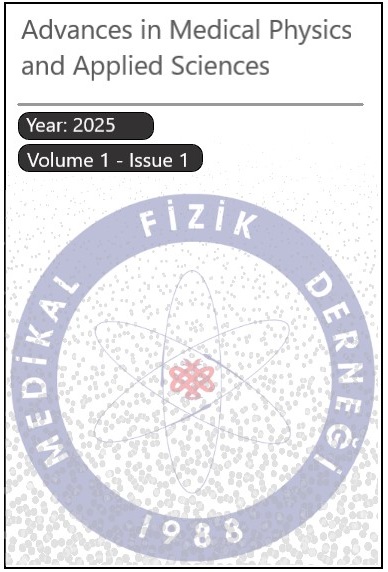Use of Cone-Beam CT in Whole-Brain Radiation Therapy: Time and Economic Assessment
DOI:
https://doi.org/10.63187/ampas.11Keywords:
Radiotherapy, whole-brain irradiation, computed tomography, cone-beamAbstract
Purpose: Whole-brain irradiation is commonly used for patients with multiple brain metastases and poor performance status, often requiring rapid treatment planning. This study compares cone-beam computed tomography (CBCT)-based planning to conventional CT simulation for whole-brain radiotherapy (RT) to evaluate dosimetric differences and cost-effectiveness. Materials and Methods: Ten patients receiving palliative whole-brain RT at Acıbadem Atakent Hospital were included. Both CT simulation and CBCT images were used to create 3D conformal RT (3DCRT) plans. Brain and lens contours were marked, and dose calculations were performed with 6MV photon energy. Plans were normalized to ensure 95% of the target volume received 99,5% of the prescribed dose. Key metrics, including conformity index (CI), lens doses, maximum brain dose, brain volume, Hounsfield Units (HU), and monitor units (MU), were compared using the Wilcoxon test. Findings: Results showed no significant differences in lens contouring or CI between CBCT- and CT-based plans. Brain volume was significantly larger in CBCT images, and CBCT-based plans had higher maximum doses and MU values due to HU adjustments. However, HU values themselves did not differ significantly. Conclusion: CBCT-based planning demonstrated shorter processing times and reduced workload, making it more efficient economically. With proper calibration, CBCT planning offers a viable alternative for urgent whole-brain RT planning, providing comparable dose and plan quality to CT-based methods.
Downloads
Published
How to Cite
Issue
Section
License
Copyright (c) 2025 NİLGÜL NALBANT, DAMLA POYRAZ, PHILIPP SCHILLING, SERAP YUCEL, ZEYNEP GÜRAL, FULYA AĞAOĞLU

This work is licensed under a Creative Commons Attribution 4.0 International License.




